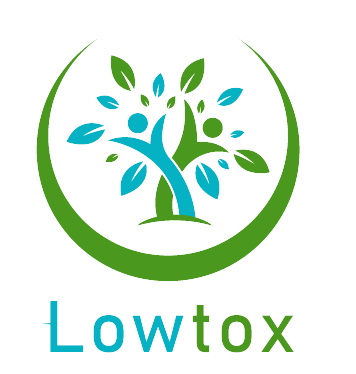Non-Toxic Guide to Healthy Grocery Shopping: Ditch Artificial Ingredients, Bust Myths, Choose Healthiest Foods.
“The Real Food Grocery Guide” helps readers navigate grocery store aisles to make healthy, cost-effective food choices. It covers everything from deciphering food labels to selecting the most nutritious produce and animal products.
$22.98

Price: $22.98
(as of Aug 29, 2024 10:00:28 UTC – Details)

Everyone wants to eat healthy. But with the thousands of products lining the grocery store shelves it can be overwhelming. Is fat-free or gluten-free healthier? What are food labels really saying? What does “natural” truly mean and is organic produce and grass-fed meat worth the extra cost? It can be confusing, not to mention expensive. It doesn’t have to be that way.
The Real Food Grocery Guide helps you navigate every aisle of the grocery store clearly outlining what foods are truly the healthiest, the freshest, and the most economical (and which ones belong in the garbage rather than your grocery cart!)
The Real Food Grocery Guide is the most comprehensive and actionable guide to grocery shopping and healthy eating ever with advice on:
· what to eat for health, balanced weight, and longevity
· how to shop to save a significant amount of time and money
· how to decipher food “buzz words” (like natural, grass-fed, wild, organic, gluten-free, etc.): know which to buy and which to leave on the shelf
· how to select the most nutritious and delicious produce, every time (no more getting home with brown avocados or tasteless melon)
· why the quality of animal-products-such as meat, fish, eggs, and dairy-is crucial–and how to choose the healthiest kinds
· how to store fresh food properly so it doesn’t spoil too quickly
· why calorie counting is futile – and what you should look for instead to determine the healthiness of any food
· how to decipher what a food label is really saying
· how to avoid being duped by sneaky food industry claims and choose the best packaged products every time
From the Publisher


What Does the Color of Your Produce Indicate?
Phytochemicals are plant chemicals responsible for the color, flavor, and aroma of a fruit or vegetable, which is why color can be a good indicator of what’s inside. Phytochemicals also provide health-supportive or disease-preventive properties, plus antioxidant and anti-inflammatory benefits. Scientists have discovered thousands of phytochemicals, and it’s likely there are thousands more yet to be identified.
Color does not tell all, though. A single piece of produce can contain thousands of different phytochemicals, and they ultimately work together to deliver their health benefits. So although the research around specific phytochemicals is interesting, they’re always best consumed in whole foods rather than as supplements. The table below summarizes some of the more common and better-studied phytochemicals and the foods in which you’re likely to find them.


Asparagus
Selection:
Fresh asparagus not only tastes better, it also retains more of its nutritional value. Its nutrients do deteriorate quickly, though, so only buy what you’ll consume within a day or two. Look for thin, tender spears that are dark green, shiny, and straight, not bent. The tips should be tightly closed and green or purplish in color. The cut end of the stalk should be smooth and moist.
Skip white asparagus, which is simply green asparagus that’s been buried in soil so it never sees the light of day. It’s tougher and has only one-seventh the antioxidants it has when grown normally.
You’ll find the best asparagus at farmers’ markets. Seek out farmers who display theirs on ice: These will be the most tender because delayed chilling toughens them.
Storage:
Asparagus is best eaten on the day of purchase, as it loses nutrients and flavor rapidly. If you plan to keep it for more than a day, refrigerate it in a micro-perforated bag (see at left) in the crisper drawer. It will last only a few days, at most.
Preparation:
The best preparation for asparagus is steaming: It takes five minutes and increases its antioxidant value by 30 percent.
Asparagus is an excellent source of vitamin K and folate (offering 22 percent and 27 percent DV, respectively, per cup, or 134 g) as well as inulin, which supports digestive health. What’s most intriguing, though, is that it’s the best food source of glutathione, a detoxifying antioxidant that breaks down carcinogens and may aid in preventing and reversing certain types of cancer.


Chapter 5
Grains.


Genetically Modified Foods (GMO)
Of all the controversial food ingredients, none stirs up quite such a heated debate as GMOs. While any organism—including plants, viruses, animals, and bacteria—could be GMO, the ones that make it into our food supply have caused the biggest uproar.
At its simplest, a GMO food crop has had its genetic material artificially manipulated to give it a specific trait or to cause it to grow in a more desirable way that does not occur in nature.
FDA approval for GMOs is based on scientific research provided by the very biotech companies that created them—without any third-party testing. Apparently, this research was enough to convince the FDA that GMOs are not substantially different or unique compared to conventional crops. However, those same biotech companies also went to the United States Patent and Trademark Office and were able to score patents on these very same crops based on the assertion they’re substantially different and unique compared to conventional crops. Go figure.


Avocado
Selection:
Choose Haas avocados—the ones that turn blackish when ripe and have a rough, alligator-like skin. Haas is the most nutrient-dense and best-tasting variety. Sometimes you’ll also see green avocados with smooth, shiny skin, which can be any of a number of different varieties. To choose one, look for those with deep dark green, almost blackish, skin. These will be ripe. Avoid any with soft spots, air pockets, or a pit that seems to be rolling around inside. Next, remove the little center stem nub on the top. If green flesh is revealed, it’s fresh. If it’s brown or moldy, the avocado is bad and will be brown inside.
Varieties:
Most nutritious varieties: Haas avocados, green avocados.
Least nutritious varieties: Florida avocados.
Storage:
Avocados should be stored on the countertop and consumed within a day or two when ripe. You can throw a ripe avocado into the fridge to slowly decay, but it will only last an additional day or two, at best. Cut avocados brown quickly: To slow browning, always store the half with the pit. The most effective way to prevent browning is to store the cut half in a small glass container with coarsely chopped onion in the bottom (so the skin of the avocado, not the flesh, touches the onion), seal it with a tight-fitting lid, and then refrigerate it. The onion’s volatile oils are powerful antioxidants that prevent browning.
Avocado is loaded with fiber—one medium avocado provides 40 percent of your DV. One avocado also provides a hefty dose of key nutrients, including 39 percent of your DV of vitamin K, which supports bone health and proper blood clotting, and 20 percent of your DV for vitamins E and C, which support beautiful skin. What’s more, healthy fats from avocados help you absorb the fat-soluble vitamins in other foods, making them an excellent topping for leafy green salads. There’s no need to fear avocado: Eat up!
Publisher : Fair Winds Press; 1st edition (June 1, 2017)
Language : English
Flexibound : 272 pages
ISBN-10 : 1592337554
ISBN-13 : 978-1592337552
Item Weight : 1.52 pounds
Dimensions : 7 x 1.4 x 9.8 inches
Customers say
Customers find the book very easy to read and understand. They also appreciate the helpful information, explanations of which varieties are most nutritious, and beautiful pictures. Readers also appreciate useful tips on how to select and save money.
AI-generated from the text of customer reviews

$22.98







